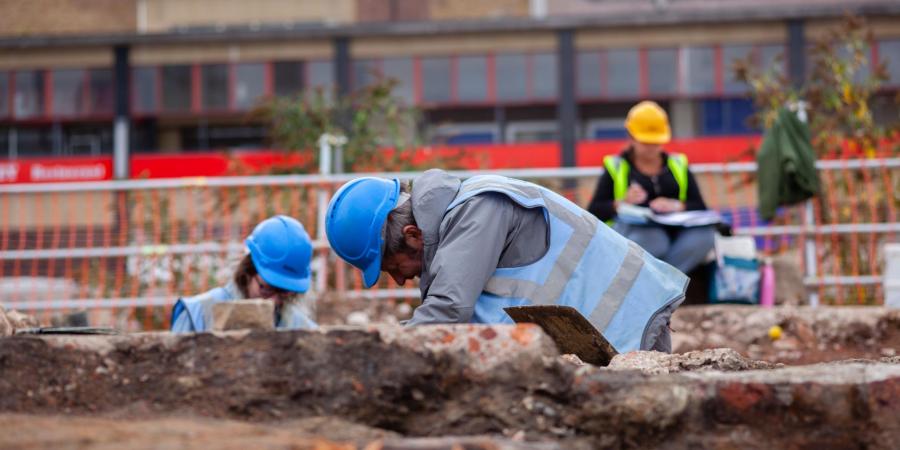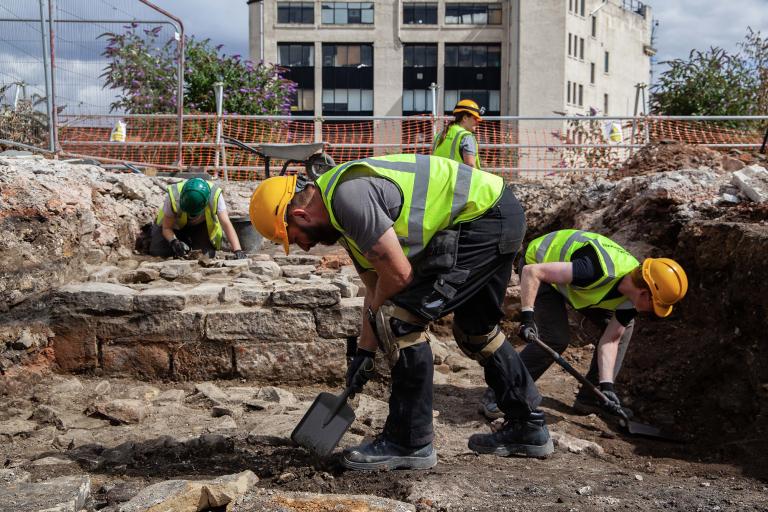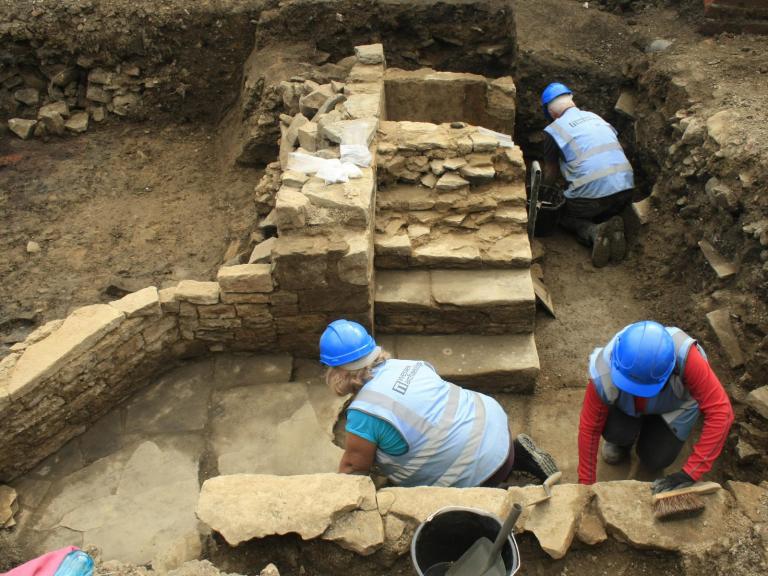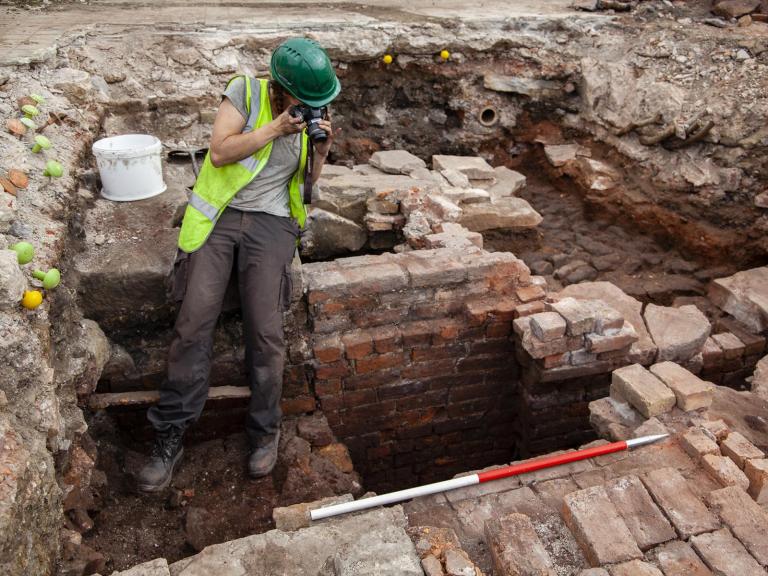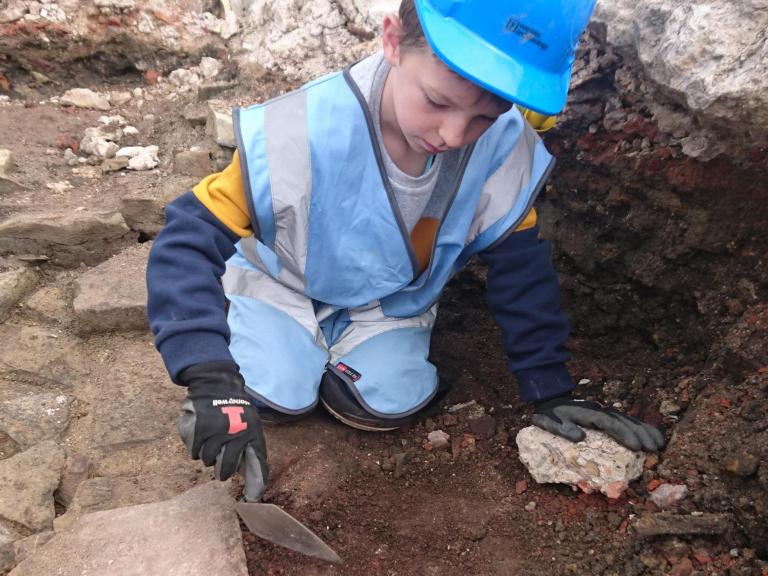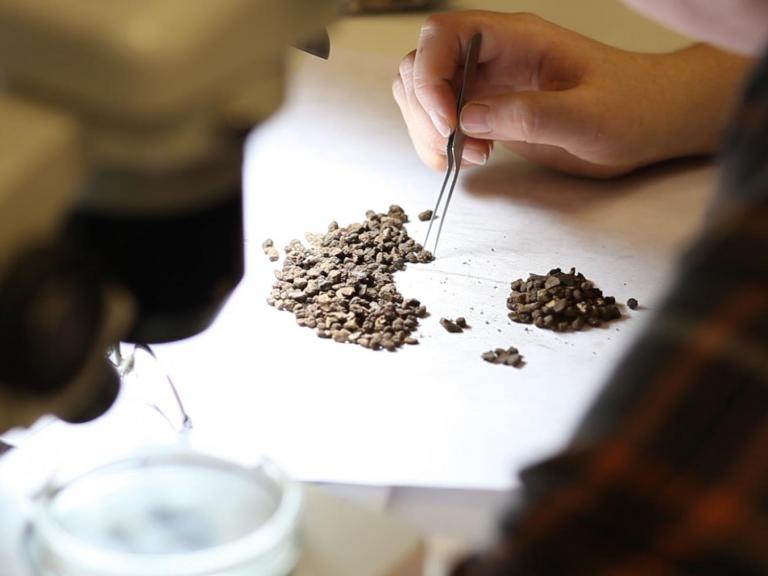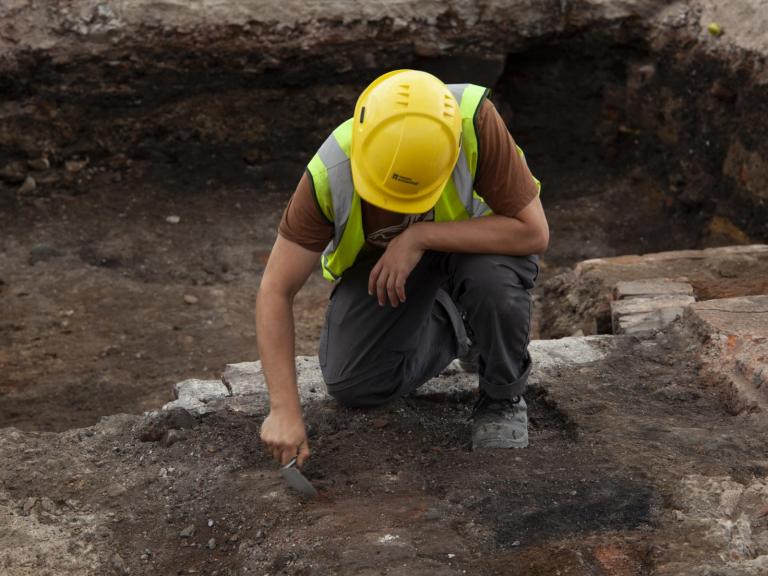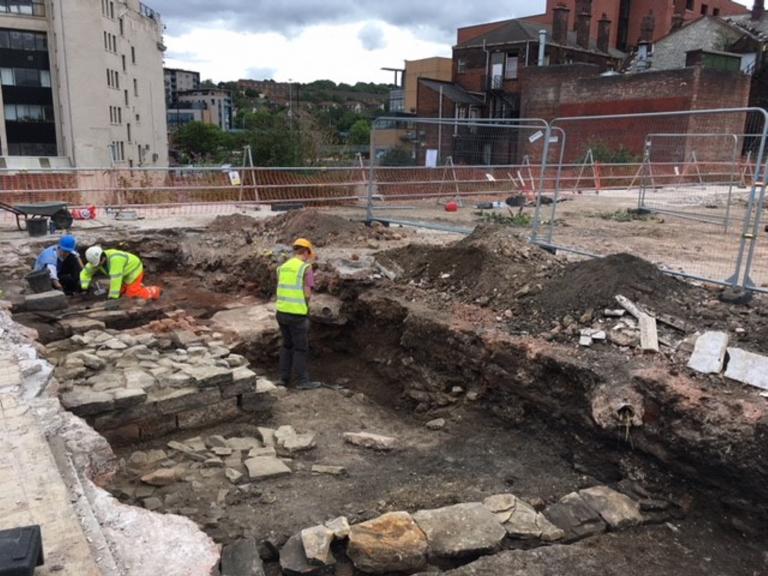Last week we said goodbye to Paul Harrison and James Chapman, two of ‘The Fantastic Four’ students from the University of Sheffield, who had to go back to their students’ duties. Thank you, lads, for all your hard work on site and for all your help with the volunteers. It’s au revoir, but not adieu. I hope to see you soon.
Among the visitors last weekend on our ever so popular open days tours were the Friends of Sheffield Castle and our friends the organisers of the local Heritage Open Days – it was good to see you.
Throughout the last six weeks (where has the time gone!) we have been inundated by encouraging messages and positive feedback regarding our work – thank you all for those. We blush a bit but feel very proud.
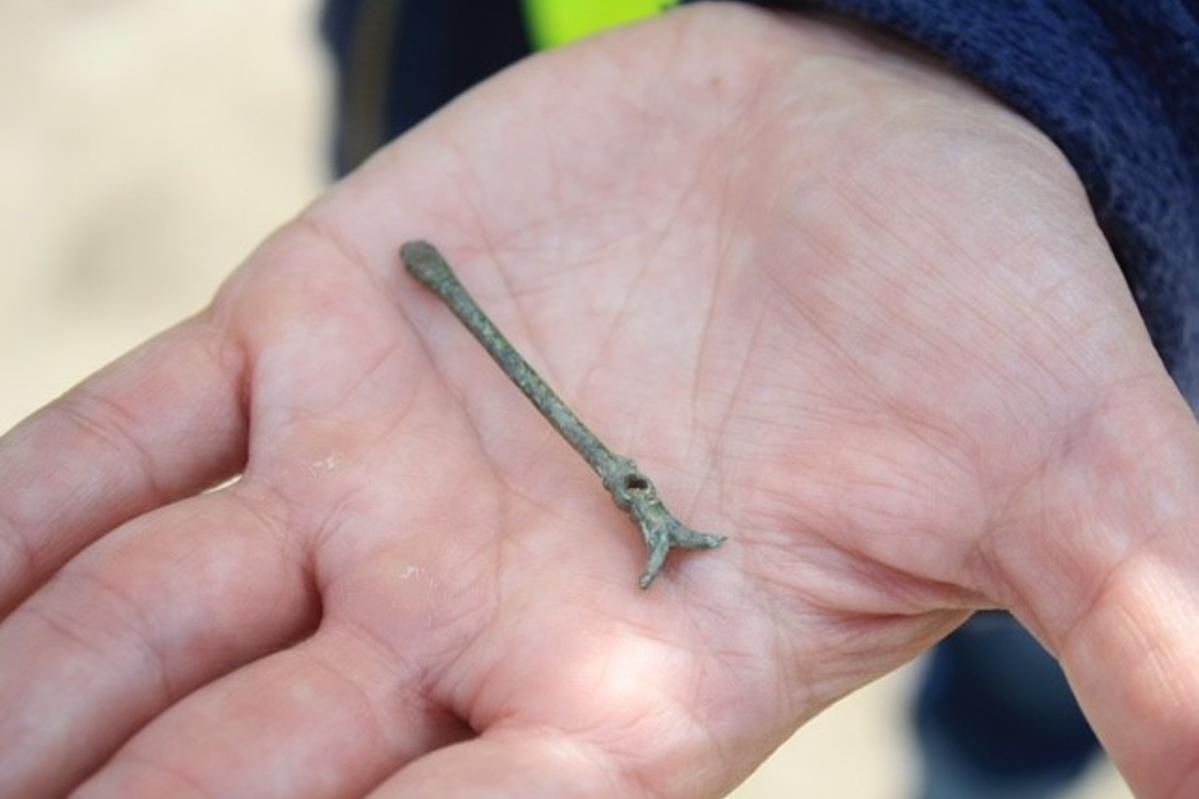
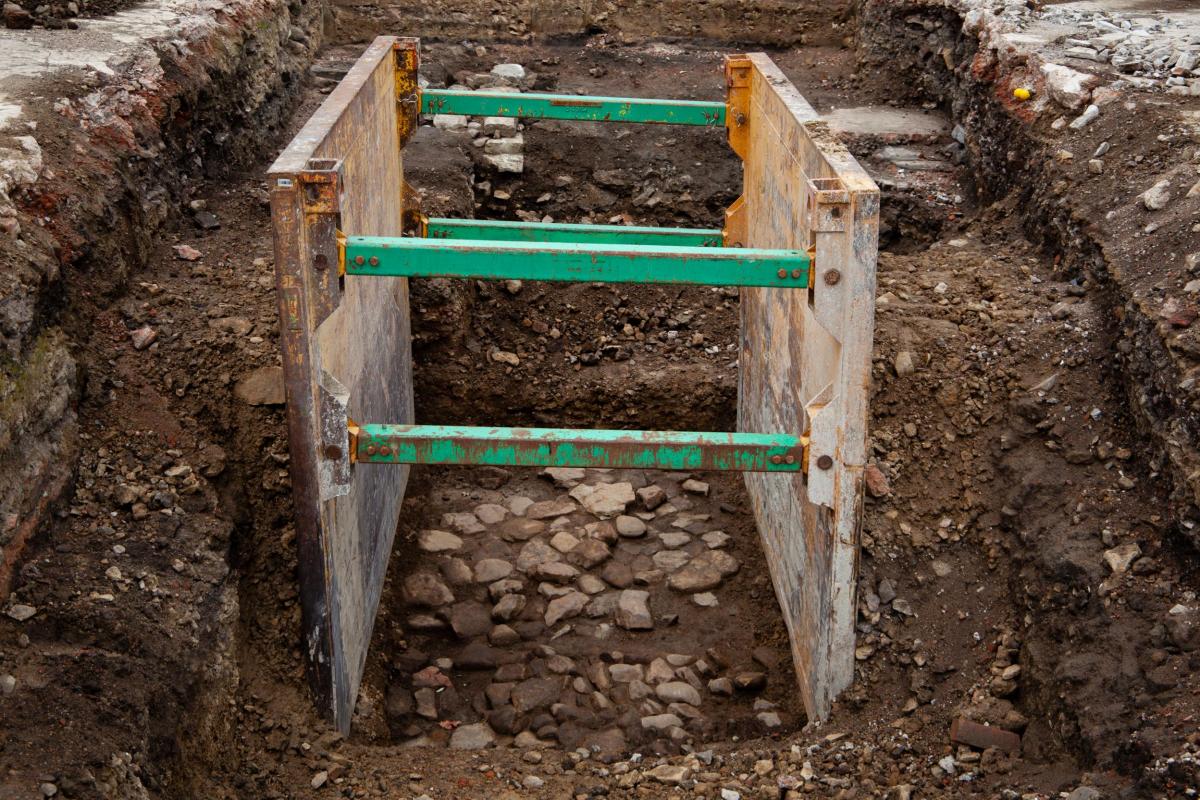
But what is the news from the trenches, I hear you ask, dear reader.
Well…
We have been digging, cleaning, sampling, recording, challenging our conclusions and digging some more. In consultation with South Yorkshire Archaeological Service and Dinah Saich, the principal archaeologist, we have been asking questions and applying our agreed strategies; we have also been adjusting to a daily flood of new archaeological evidence and information.
At the western side of the site, in one of the three trenches targeting a large ditch feature that originally surrounded the caste, we have found the moat. In the south end of one of the trenches we can see that the moat is cut into bedrock, truncated by a couple of the 20th century Castle Market’s concrete structures, and that the feature is heading towards Waingate.
On the upper platform, six trenches are targeting the remains of the medieval and post-medieval castle, and the remains of Victorian and early 20th century Sheffield. This week we have found a cobbled surface/floor, which, most likely, is castle-related and possibly medieval in date. Tumbled stones and a further cobbled area, still to be investigated, are also there. We have exposed and cleaned a small portion of a wood/timber and charcoal-rich layer and the investigation of an alignment of large stones, cut into what we initially thought to be a geological layer, has continued. We now know this layer is anthropogenic. We have more medieval finds including a copper/copper alloy ear scoop; in medieval times this petite object was part of a personal hygiene set; now it helps us date the cobbled surface.
This week I have finally managed to find some time to sit down, have a cup of coffee and talk to our volunteers.
Ever since we started, and, indeed even before we started to work on site, the number of people interested in the history of the castle, archaeology and our work has been beyond my biggest expectations. In mid-July, weeks before we started digging, we asked for volunteers to join us on site and had 175 places booked within less than 48 hours. The same number of places for our finds processing was fully booked shortly after that; followed by the full booking of our open day tours. We have had over 17,500 enquiries about the project and one of our videos has been seen by more than 1200 people so far.
I wanted to know what it is that brings so many people to the site of the Sheffield Castle and why, so, I’ve asked.
If the number of the interested individuals was staggering, their answers were even more overwhelming: from love for archaeology, via interest in history, Sheffield’s past and heritage to deeply personal connections with the site and the latest market phase – a place where many people came to buy their food, meet friends, even meet their future wife or husband. It is the place that brings back good memories and connects us all.
Till next week.
